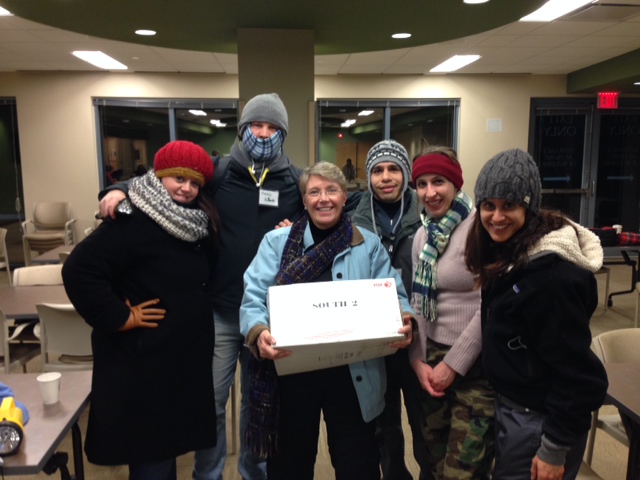A NIGHT IN THE LIFE OF A PIT COUNTER
One of my heroes Rep. John Lewis of Georgia always says, “You have to stand up, to speak up, to speak out, to find a way to get in the way.” When he organized sit-ins and participated in the civil rights movement in the 1960s, those words rang true in a very literal way for him. Today, I think of his words when I see people who aren’t treated fairly and when we are not doing right by each other. This is why I decided to help when I saw a post on the Arlington Street People’s Assistance Network (ASPAN) Twitter page that they needed volunteers for the Point-in-Time (PIT) Count. The PIT Count is a count of sheltered and unsheltered homeless persons on a single night in January. This year’s count happened January 29. It’s a snapshot of those living on the streets and a glimpse into to someone else’s reality.
This simple call to action via social media was enough for me and I even recruited Carpenter’s Operation Manager Isaac Bell to help. Our first step was attending a three hour training at Arlington County Department of Human Services. Surveying people on the streets would be different from working at Carpenter’s and the training brought that to light for me, especially when we got to the safety portion. Training taught the importance of carrying personal identification, using flashlights instead of cell phones, and announcing yourself when approaching someone on the streets. After the training I was so excited to get started and thought about calling my grandmother to share my excitement but it makes her nervous when I go into the parking garage at Trader Joe’s… so I decided not to mention it.
The big day had finally come and it took me 30 minutes to put on all my layers for the evening. I bundled up with 3 pairs of socks, 2 pants, 4 shirts, 3 scarves, 2 hats and my long winter coat. It was exhausting and uncomfortable putting on all those layers.
I had a great team made up of two ASPAN employees, a Spanish translator who works for the Behavioral Healthcare Division at DHS, and a couple individual volunteers. We left headquarters around 9 p.m. in a van driven by ASPAN Executive Director Kathy Sibert who lead us to our first stop in South Arlington. Upon arriving at our first destination we all hopped out of the van as Kathy exclaimed, “It’s really cold out tonight so make sure you look under vehicles, behind dumpsters and shine your flashlight in cars!”

While walking around the neighborhood, Isaac and I approached a school bus with blacked out windows and knocked on the door. A young man in his twenties answered and we asked him if he would be willing to answer a few questions. He asked us to step into the bus. At this point I almost turned around and headed home. I recalled all the times my parents had talked with me about strangers and going into people’s homes I didn’t know, but I knew what I signed up for and didn’t want to be the weak link in my group. When I stepped on the bus I was pleasantly surprised.
The young man had made the bus into his own home. He had laid down hard wood floors, put in a solar panel ceiling, built a closet, had a bed in the back and was generating his own electricity. Isaac and I sat down on the couch to ask our 15 questions.
In the middle of the survey he took a call on his cell phone from a friend. The friend was inviting him to dinner but he had already been to dinner that evening with his dad. He had a job, a gym membership and fantastic relationships with friends and family. His girlfriend lives on the bus with him and in April they are going to travel the country. I stepped off the bus feeling relieved that the person living inside was okay and, frankly, that I was okay too.

I know the data we collected last Wednesday is vital to ending homelessness in our region, but I don’t need any more data to tell you homelessness is a problem in our country. If one person is living on the streets, it’s one too many.
